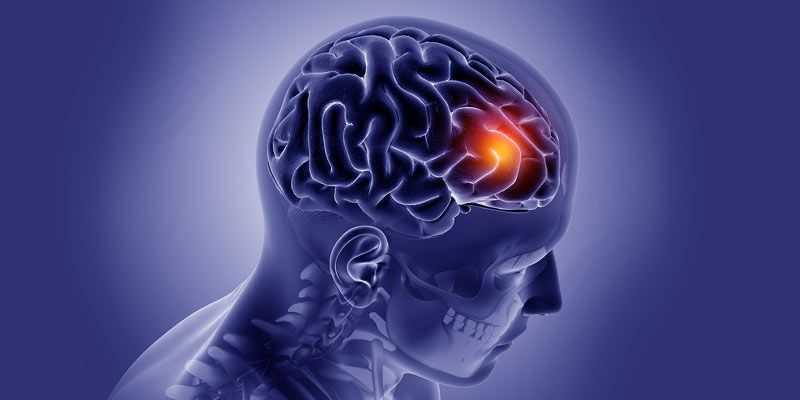The realm of neuro-oncology has witnessed significant strides in recent years, transforming the landscape of brain tumor diagnosis and treatment. As our understanding of the complexities of these conditions deepens, so do the innovations in technologies and therapeutic approaches. This article explores the latest advances in navigating the landscape of brain tumors, from improved diagnostic tools to cutting-edge treatment modalities that offer hope for patients and clinicians alike.
I. Understanding Brain Tumors:
Diverse Nature of Brain Tumors:
Brain tumors encompass a broad spectrum of conditions, ranging from benign to malignant. Understanding the specific type, location, and characteristics of a brain tumor is crucial for devising an effective treatment plan.
Challenges in Diagnosis:
Diagnosing brain tumors poses unique challenges due to the complexity of the central nervous system. Advanced imaging techniques and molecular diagnostics have played a pivotal role in enhancing accuracy and precision in diagnosis.
II. Advances in Diagnostic Imaging:
Functional MRI (fMRI):
Functional MRI allows clinicians to visualize brain activity in real-time, providing valuable insights into the functional areas of the brain and assisting in surgical planning to minimize damage to critical regions.
PET-CT Imaging:
Positron Emission Tomography combined with Computed Tomography (PET-CT) offers enhanced imaging capabilities, allowing for better characterization of tumors and assessment of their metabolic activity.
III. Molecular Diagnostics and Biomarkers:
Genomic Profiling:
Advances in genomics have enabled the identification of specific genetic mutations associated with various brain tumors. Genomic profiling helps tailor treatment strategies based on the unique molecular characteristics of the tumor.
Liquid Biopsy:
Liquid biopsy techniques, such as analyzing cerebrospinal fluid or blood samples, offer a minimally invasive means of detecting genetic alterations and monitoring the progression of brain tumors over time.
IV. Targeted Therapies:
Precision Medicine Approaches:
Targeted therapies aim to disrupt specific molecular pathways involved in the growth and survival of cancer cells. These approaches, guided by the molecular profile of the tumor, hold promise in enhancing treatment efficacy while minimizing side effects.
Immunotherapy for Glioblastoma:
Immunotherapy, which harnesses the body’s immune system to target cancer cells, is showing promise in the treatment of glioblastoma, a particularly aggressive form of brain cancer.
V. Advancements in Surgical Techniques:
Intraoperative MRI (iMRI):
Intraoperative MRI allows surgeons to visualize the tumor in real-time during surgery, enabling more precise and complete tumor removal while minimizing damage to healthy surrounding tissue.
Minimally Invasive Approaches:
Minimally invasive techniques, such as laser ablation and stereotactic radiosurgery, offer alternative options for treating certain brain tumors with reduced impact on surrounding brain structures.
VI. Targeting Tumor Microenvironment:
Angiogenesis Inhibitors:
Angiogenesis inhibitors target the formation of new blood vessels within tumors, depriving them of the nutrients and oxygen needed for growth. These agents show promise in controlling tumor progression.
Tumor-Treating Fields:
Tumor-treating fields involve the application of low-intensity electric fields to disrupt cell division in the tumor. This novel approach offers a non-invasive treatment option for certain brain tumors.
VII. Collaborative and Multidisciplinary Care:
Tumor Boards and Comprehensive Centers:
Multidisciplinary tumor boards and comprehensive cancer centers bring together specialists from various disciplines to collaborate on individualized treatment plans, ensuring a holistic approach to patient care.
Patient-Centered Care:
Recognizing the unique challenges of brain tumors, patient-centered care emphasizes addressing not only the medical aspects but also the psychological and emotional well-being of patients and their families.
Conclusion:
As we navigate the complex landscape of brain tumors, the amalgamation of advanced diagnostics, targeted therapies, and innovative surgical techniques is transforming the outlook for patients facing these challenging conditions. The strides made in personalized medicine, immunotherapy, and minimally invasive interventions signify a new era in neuro-oncology. With a commitment to ongoing research, collaborative care models, and patient-centric approaches, the journey through the landscape of brain tumors is evolving, offering newfound hope and optimism for those impacted by these intricate and often formidable diseases.

Reblog It collaborates closely with clients to develop tailored guest posting strategies that align with their unique goals and target audiences. Their commitment to delivering high-quality, niche-specific content ensures that each guest post not only meets but exceeds the expectations of both clients and the hosting platforms. Connect with us on social media for the latest updates on guest posting trends, outreach strategies, and digital marketing tips. For any types of guest posting services, contact us on reblogit.webmail[at]gmail.com.
